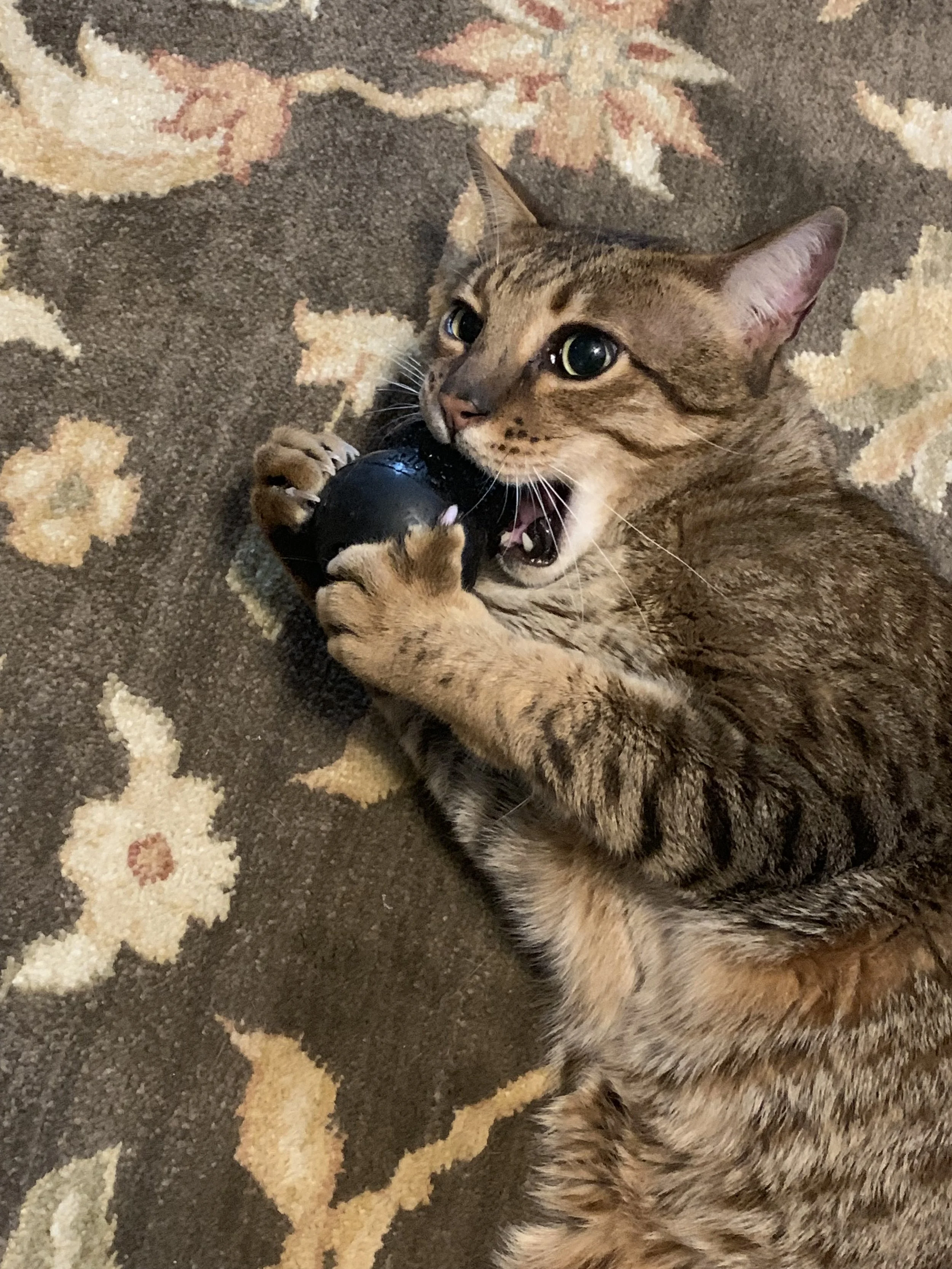Meet the Team
Harley: CEO of Hydration and Human Behavior
Harley is a striking Bengal mix with the voice of a drama king and the judgmental gaze of a seasoned life coach. Known for his theatrical vocalization demanding the bathroom faucet be turned on (yet never drinking from it), Harley prefers hydration by ritual, not convenience—his fancy cat fountain remains untouched, of course.
This feline executive knows exactly what he wants, and who needs to do it. If the spare human dares to dish up dinner inappropriately, Harley stages a hunger strike. When it's TV time, you’ll find him cozied up next to his chosen non-staff human, attentively watching (or pretending to, for the cuddles). Meanwhile, the spare human gets the occasional soul-piercing stare of disapproval for breathing too loudly.
Harley doesn’t just live in the house. He runs it.
Max: Chief Sibling Provocation Officer, and self-appointed Assistant to the Snack Manager
Max is a Bengal mix with the heart of a rebel and an appreciation of all things chewable. Allegedly Harley’s brother (though both deny it), Max believes sibling rivalry is a full-contact sport—and practices regularly.
When not staging WWE-style brawls across the furniture, Max enjoys eating assorted food and non-food items. No bed, pillow, blanket, or plate of food is safe.
Max is the lovable destroyer of indestructible dog toys to Harley’s refined drama. Together, they make exactly one stable household… if you squint hard and ignore the screaming.
He’s chaos with whiskers, and life would be much too quiet without him.
The Bathroom Faucet: High Priest of Ritual Hydration and Silent Co-Founder of the Wellness Initiative
In a home where fountains are snubbed and bowls are ignored, the bathroom faucet reigns supreme. Silent unless summoned (loudly), this noble fixture plays an essential role in staff hydration, per direct orders from the CEO.
Called upon with great yowling fanfare, the faucet must be turned on to exactly the right trickle. Too much? Offensive. Too little? Disrespectful. When the chosen human performs the ritual correctly, Harley may partake … or simply gaze into the water's soul, then walk away satisfied.
The faucet asks for nothing, gives everything, and stands in quiet solidarity with the spare human, who also knows what it’s like to be judged without cause.
The Spare Human: Unpaid Intern, Treat Distribution Division
The Spare Human lives a life of near-greatness: close enough to feed the cats, yet never truly acknowledged. Trusted to scoop litter and monitor food allocation, and assorted other duties as assigned by the CEO in the absence of the primary non-staff human (even then, usually only under protest).
Despite management’s typical (c)attitude, the Spare Human remains loyal. Max offers chaos-cuddles, and Harley... well, Harley offers judgment. And sometimes side-eye. But that’s basically affection, right?
The Spare Human understands their place in the hierarchy and performs their duties with quiet dignity, occasional snacks, and a faint hope that one day the CEO might actually blink at them slowly.
Strategic Planning
It all begins with an idea.
How do you center your strategic plan in daily work when everything changes, everywhere, all the time?
Have you ever been on a road trip with no agenda, no plan, no map? Just a group of friends exploring the world, stopping wherever the whim strikes them? The joy is in the journey, not the destination.
That’s an exciting, exploratory approach. For individuals, friends, fun. Not necessarily the best approach for an organization or business. Strategic planning is critical to organizational growth and success. You need that road map to guide you, to keep the destination in mind.
Recent years have highlighted the importance of having a plan, but ensuring that it is an adaptable plan. When the world changes, you need to be able to shift with it, without being mired in “following the plan.”
Strategic planning has often used a 3-5 year planning model, incorporating feedback from a variety of stakeholders, to create overarching goals and objectives, as well as outlining specific activities for staff to tackle during that time. For some, this is exactly the right course of action.
You shouldn’t buy a house, a car, heck even a pair of jeans based on what “fits” someone else. You want, need, and deserve the house, car, jeans, plan that fits you and your life or work.
Before hiring a strategic planning facilitator, consider what you want at the end of the process. Do you want a 3-5 year plan with details about programs, processes, specific activities? Do you want something to guide the next year, that you can revisit every year to check that you are on track for a longer vision? Do you want a hybrid that gives you checkpoints for the next year, while also offering the 3-5 year vision? Do you want something that focuses on how you will make the community different in the distant future?
After experiencing a variety of planning processes as staff, Executive Director, and board member, I have found staff capacity and size combined with board engagement to be the key factors in which plan works best for an organization.
My personal preference is a strategic plan that focuses on how you will change the community if you truly achieve your mission. Start with that question, dream big.
From there, consider the key areas that build that future. What does that success look like for all stakeholders?
Once you have that vision, is the board engaged enough to be an active participant, to function almost as additional staff to achieve those goals? Or will the day to day work fall on staff? What is the overall capacity? Can you tackle five new programs at once? Can you make significant changes to internal processes quickly? It may be more beneficial to leave the day to day details – what programs are changed or launched and on what timeline, what new processes are implements and how quickly – to staff. The director and staff know what they can handle, let them set the pace once the board has established the umbrella plan.
Plans should be the basis for board meetings, consistently discussing the plan and how various organizational work is (or is not) moving things forward. Plans should also be reviewed annually in my opinion. This allows leadership to review and adjust the plan to adapt to current events early and thoughtfully.
I’m also a big believer in a one page strategic plan. Something that can be front and center in daily work. Something that can be read, re-read, and read again whenever decisions need to be made. Priority should be given to things that move the strategic plan forward.
Contact me if you would like to talk more about my approach to strategic planning and if it would be a good fit for you.



